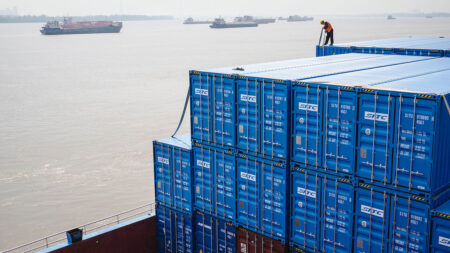On that fateful day, investors around the world were gripped by fear and uncertainty as stock markets tumbled and panic set in. In Japan, the Topix share index plummeted by 12%, causing shockwaves throughout the region. South Korea and Taiwan also experienced significant drops in their stock prices, with losses of 9% and 8% respectively. The turmoil spread to European markets, further exacerbating the sense of unease and apprehension.
As the trading day progressed, the VIX index, a key indicator of market volatility, soared to levels not seen since the early days of the covid-19 pandemic and the aftermath of the Lehman Brothers collapse in 2008. This sharp increase in volatility reflected the heightened sense of fear and uncertainty among traders, who were bracing themselves for further market turmoil and chaos.
Amidst the chaos, investors turned to traditionally-safe assets such as gold in search of stability and security. However, to their dismay, even gold prices were plummeting, indicating that investors were selling off assets indiscriminately in a desperate bid to stem their losses and protect their investments. The situation was dire, and the specter of a full-blown crisis loomed ominously over global financial markets.
In the wake of the previous week’s market rout, investors were grappling with the harsh reality of a potential economic meltdown. The events of August 5th only served to exacerbate these fears, as the global economy teetered on the brink of collapse. Governments and central banks scrambled to contain the crisis and restore confidence in the markets, but the situation seemed to be spiraling out of control.
Despite the best efforts of policymakers and financial institutions, investors remained on edge as they watched helplessly as their investments eroded before their eyes. The once-stable financial markets were now fraught with uncertainty and volatility, leaving investors scrambling to protect their assets and weather the storm.
As the day drew to a close, a sense of unease lingered in the air, with investors bracing themselves for further turbulence in the days ahead. The events of August 5th had shaken the global financial system to its core, leaving investors and policymakers alike scrambling to make sense of the chaos and uncertainty that had gripped the markets.
In the days and weeks that followed, the global economy faced its most severe test in recent memory. The events of August 5th served as a stark reminder of the fragility of the financial markets and the inherent risks that come with investing in an interconnected global economy. As investors and policymakers alike worked tirelessly to restore stability and confidence in the markets, the world held its breath, waiting to see what the future would hold for the global economy.







